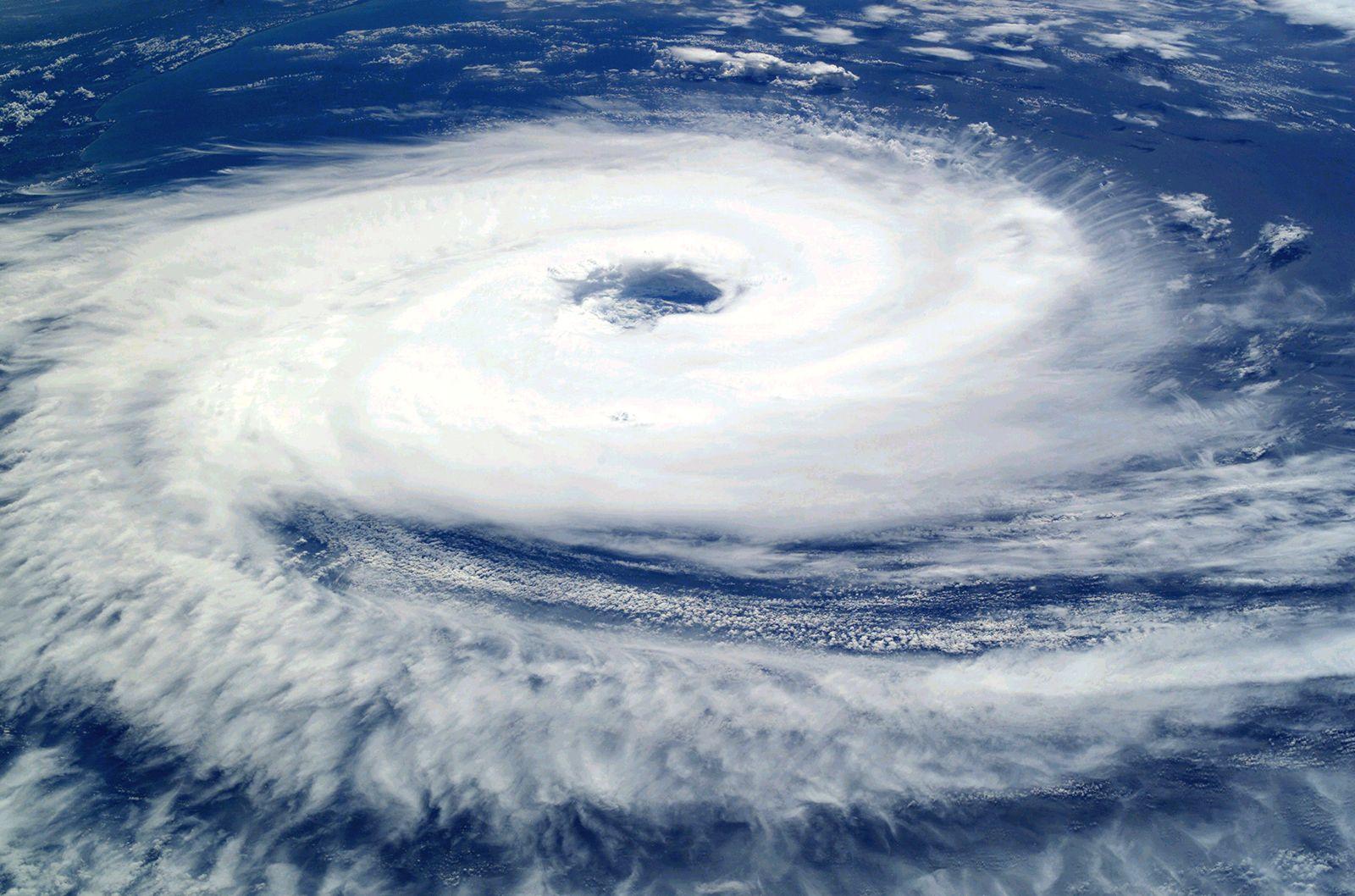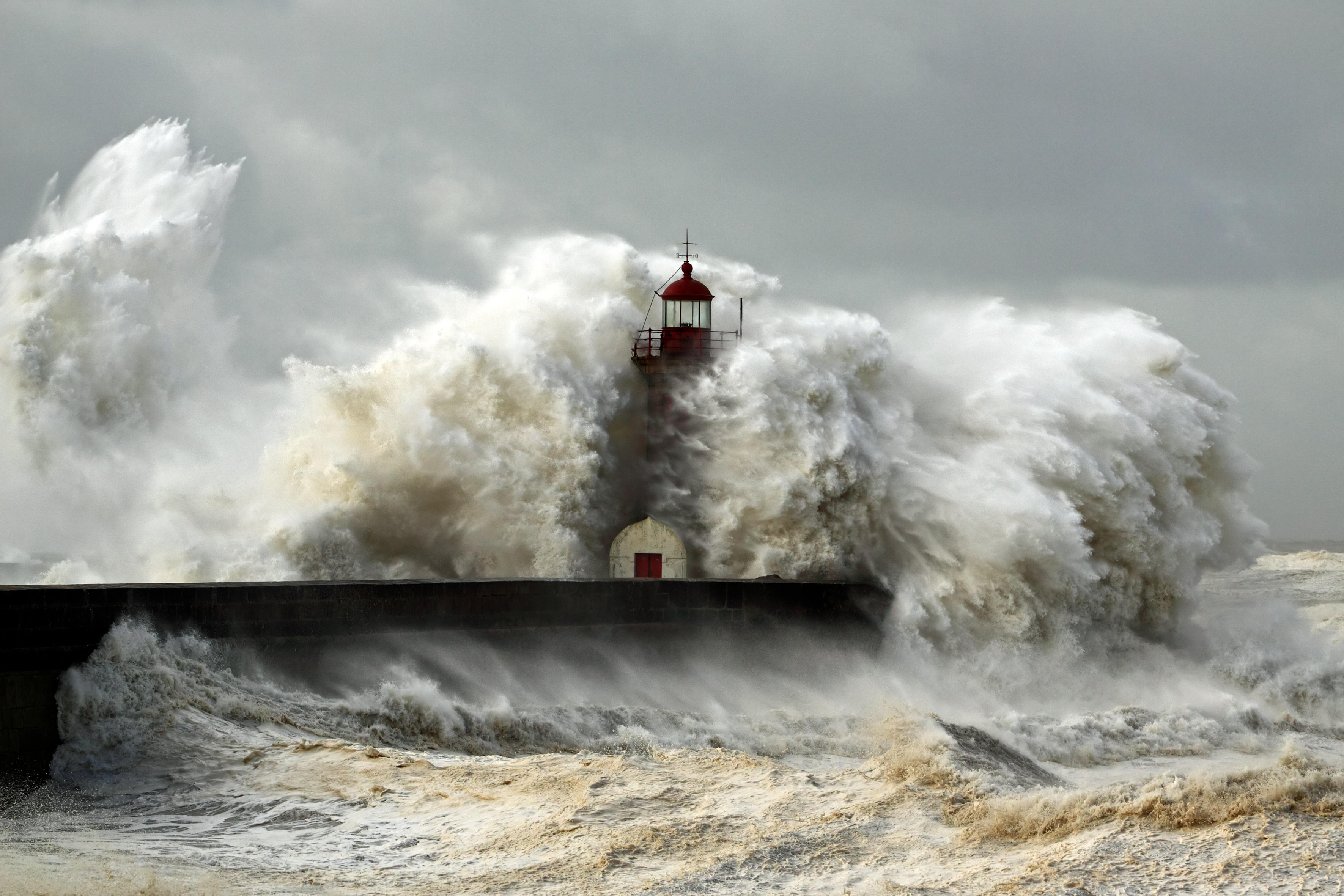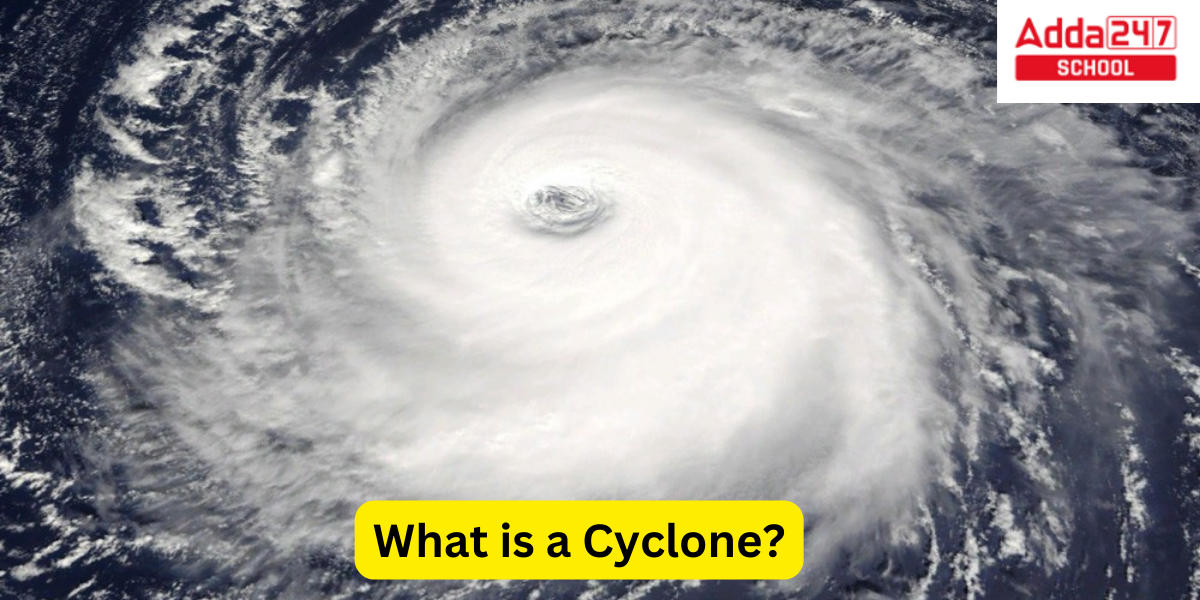What is a Cyclone?
Cyclones are one of the most destructive natural disasters on Earth, capable of causing widespread damage and loss of life. These intense low-pressure systems can form over oceans and cause devastating storms, high winds, heavy rainfall, and storm surges along coastal regions.
Cyclone: Different Names
Cyclones are also known by various names depending on where they occur. In the North Atlantic and Eastern Pacific, they are called hurricanes, in the Western Pacific, they are known as typhoons, and in the Indian Ocean, they are called cyclones.
Formation of Cyclone
Cyclones form over warm ocean waters where the sea surface temperature is above 26.5°C (80°F). Warm water provides the energy needed for the storm to grow and intensify. As the warm air rises, it creates an area of low pressure that draws in more warm, moist air from surrounding areas. The rotating winds of the Earth then cause the system to spin, creating a vortex.

Parts of Cyclone
Cyclones are categorized according to their sustained wind speeds on the Saffir-Simpson scale, with Category 1 being the weakest and Category 5 being the strongest. Category 5 cyclones have sustained wind speeds of over 157 mph (252 km/h) and can cause catastrophic damage to buildings, infrastructure, and natural landscapes.
The most destructive part of a cyclone is often the storm surge, which is a wall of water that can reach heights of up to 30 feet (9 meters) above sea level. As the cyclone approaches land, it pushes a large amount of water towards the shore, causing flooding and damaging everything in its path.
In addition to storm surges, cyclones also produce heavy rainfall that can cause flash floods and landslides. These can be particularly dangerous in areas with poor infrastructure and limited access to emergency services.
Cyclone: Categorization
Cyclones are natural phenomena that can cause severe damage to life and property. They are formed over warm tropical waters and are characterized by strong winds and heavy rainfall. Cyclones are classified into different categories based on their intensity, with the most intense cyclones being the most destructive. In this article, we will discuss the categorization of cyclones.
Cyclones are classified based on their maximum sustained wind speed, which is the speed of the wind at the center of the cyclone. The categories of cyclones are based on the Saffir-Simpson Hurricane Wind Scale, which is a scale that was developed in 1971 to categorize hurricanes in the Atlantic Ocean. This scale has since been adapted for use in other parts of the world to categorize cyclones.
Category 1 Cyclone:
A Category 1 cyclone is the least intense cyclone, with a maximum sustained wind speed of 74-95 mph (119-153 km/h). This cyclone can cause damage to trees, power lines, and unanchored mobile homes, but it is not likely to cause extensive damage to structures.
Category 2 Cyclone:
A Category 2 cyclone has a maximum sustained wind speed of 96-110 mph (154-177 km/h). This cyclone can cause significant damage to roofs, windows, and doors. It can also cause damage to mobile homes, small boats, and caravans. Trees can be uprooted, and power lines can be knocked down, causing power outages.
Category 3 Cyclone:
A Category 3 cyclone is a major cyclone with a maximum sustained wind speed of 111-129 mph (178-208 km/h). This cyclone can cause significant damage to buildings, roofs, and windows. It can also cause damage to roads and bridges, and power outages can be widespread. Trees can be uprooted, and large objects can be blown around, causing damage and injury.
Category 4 Cyclone:
A Category 4 cyclone is an extremely intense cyclone with a maximum sustained wind speed of 130-156 mph (209-251 km/h). This cyclone can cause severe damage to buildings, including the collapse of roofs and walls. Power outages can be widespread, and water and electricity services can be disrupted. Trees can be uprooted, and debris can be blown around, causing significant damage and injury.
Category 5 Cyclone:
A Category 5 cyclone is the most intense cyclone, with a maximum sustained wind speed of over 157 mph (252 km/h). This cyclone can cause catastrophic damage, with buildings being destroyed or swept away. Power outages can be prolonged, and water and electricity services can be severely disrupted. Trees can be uprooted, and large objects can be lifted and thrown around, causing extensive damage and injury.
Impacts of a Cyclone
- The impacts of cyclones can be devastating, causing loss of life, displacement of populations, and significant economic damage.
- The long-term effects of cyclones can also be felt for years after the initial impact, particularly in areas where infrastructure and housing have been severely damaged.
- In order to prepare for cyclones, it is important to have an emergency plan in place.
- This should include evacuation routes, emergency shelters, and a way to stay informed about the storm’s progress.
- is also important to secure loose objects, such as outdoor furniture and signage, and to reinforce buildings to withstand high winds and storm surges.
- Despite their destructive nature, cyclones are a natural part of the Earth’s climate system. As the planet continues to warm due to human activity, it is likely that the frequency and intensity of cyclones will increase.
- It is therefore important to take action to reduce greenhouse gas emissions and mitigate the impacts of climate change in order to minimize the risks posed by these powerful storms.

Types of Cyclone
Cyclones are large-scale atmospheric disturbances that can cause severe weather conditions. These weather phenomena are characterized by low-pressure systems, which are often accompanied by high winds and heavy rainfall. Cyclones can occur in various parts of the world and are known by different names depending on their location and intensity. Here are some of the most common types of cyclones:
Types of Cyclone: Tropical Cyclones
These are the most well-known types of cyclones, commonly referred to as hurricanes or typhoons. They occur in the tropical regions of the world and are characterized by their low-pressure systems, high winds (up to 200 mph), and heavy rainfall. Tropical cyclones are classified based on their wind speed, with Category 5 being the most severe.
Types of Cyclone: Extratropical Cyclones
Also known as mid-latitude cyclones, these are low-pressure systems that occur in the middle latitudes (between 30 and 60 degrees). Unlike tropical cyclones, they are not confined to a specific area and can occur anywhere in the world. Extratropical cyclones are often accompanied by heavy rain, snow, and strong winds.
Types of Cyclone: Polar Cyclones
These are low-pressure systems that occur in the polar regions of the Earth. They are usually weaker than tropical or extratropical cyclones and are characterized by their low temperatures, high winds, and snowfall.
Types of Cyclone: Mesocyclones
These are smaller-scale cyclones that occur in thunderstorms. They are characterized by their rotating updrafts and can produce tornadoes.
Types of Cyclone: Subtropical Cyclones
These are low-pressure systems that occur in the subtropical regions of the world. They have characteristics of both tropical and extratropical cyclones and are often associated with weak or no thunderstorm activity.
Types of Cyclone: Polar Low
This is a small-scale, low-pressure system that occurs in the polar regions. They are similar to mesocyclones but occur over the ocean and are associated with cold air outbreaks.
Types of Cyclone: Medicane
A rare type of tropical-like cyclone that occurs in the Mediterranean Sea. They are often less intense than tropical cyclones but can still cause significant damage.
Cyclones are a common and potentially dangerous weather phenomenon that can occur in various parts of the world. While tropical cyclones are the most well-known, there are several other types of cyclones that can cause severe weather conditions. It is important to be aware of the different types of cyclones and their characteristics to stay safe during extreme weather events.
Disaster Management for Cyclone
Cyclones are among the most devastating natural disasters that can occur, and they can wreak havoc on coastal areas, leaving destruction and loss of life in their wake. As a result, it is critical to have a comprehensive disaster management plan in place to minimize the damage caused by these storms. Below are the essential elements of an effective disaster management plan for cyclones:
Early Warning Systems
The first and most crucial element of a disaster management plan for cyclones is the establishment of an early warning system. This system should be capable of detecting the formation and movement of cyclones and issuing timely alerts to the authorities and the public in the affected areas. The system should also include measures to ensure that people with disabilities or limited mobility are alerted and able to evacuate safely.
Evacuation Plans
Evacuation plans are critical in reducing the risk of loss of life during a cyclone. These plans should be developed well in advance and must include instructions for evacuating low-lying areas, identifying evacuation routes, and establishing designated shelters for people who are unable to evacuate on their own. Additionally, the plan should also take into account the needs of vulnerable populations such as children, the elderly, and people with disabilities.
Communication Systems
Effective communication systems are essential for ensuring that people receive timely and accurate information during a cyclone. These systems should include multiple channels of communication, such as radio, television, social media, and text messaging, to ensure that information reaches as many people as possible. In addition, the system should also include clear instructions on what people should do during a cyclone, such as how to prepare their homes and how to stay safe.
Emergency Services
Emergency services such as fire departments, police, and medical services are critical during a cyclone. These services must be well-prepared to respond quickly to any emergencies that arise, including search and rescue missions, medical emergencies, and structural damage assessments. Additionally, these services should also be equipped with the necessary equipment and resources to respond effectively to any emergency situation.
Disaster Relief and Recovery
The final element of an effective disaster management plan for cyclones is disaster relief and recovery. This includes measures to provide food, water, and shelter to people affected by the cyclone, as well as support for rebuilding homes and infrastructure. The plan should also include measures to provide psychological support to people who have been traumatized by the cyclone, including counseling services and support groups.
Cyclones can be extremely destructive and can cause significant loss of life and property damage. However, by having a comprehensive disaster management plan in place, it is possible to minimize the damage caused by these storms. This plan should include early warning systems, evacuation plans, communication systems, emergency services, and disaster relief and recovery measures. By working together and taking proactive measures, we can ensure the safety and well-being of our communities in the face of a cyclone.
Disaster Management Project for Class 9 & 10 PDF Download
Global Warming- Definition, Causes and Effects
Joshimath Sinking Crisis Uttarakhand, History, Future, Facts









 HPBOSE Compartment Date Sheet 2025 Out, ...
HPBOSE Compartment Date Sheet 2025 Out, ...
 RUHS Counselling 2025 Round 1 Seat Allot...
RUHS Counselling 2025 Round 1 Seat Allot...
 Bihar Board Dummy Registration Card 2026...
Bihar Board Dummy Registration Card 2026...










